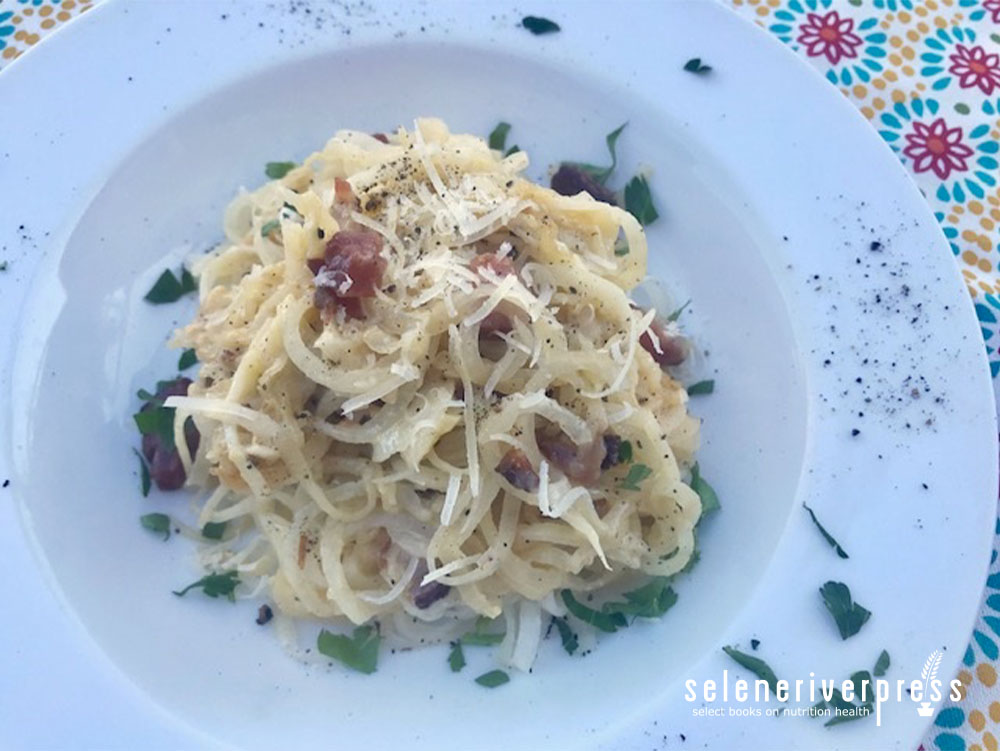The road to more healthful eating can often feel daunting. Less-optimal temptations beckon us from every corner: refined and adulterated ingredients, toxic quantities of sugars, and questionable additives abound. And to top it all off, even when you think you might be making a healthy choice, much of the information out there is conflicting, misleading, or even downright false. It’s tough for the everyday consumer to know what they can trust, without countless hours—that most people do not have—spent researching. But it’s also no fun to be constantly anxious about whether you’re making the “right” choices for your body and your health.
There is, however, one choice that will always be a giant step in the right direction. And that is to prepare as much of your own food at home as you can.
Preparing your own food provides countless advantages. It’s usually much more economical than eating out, for one. It also keeps us more connected to our food and our bodies. Plus, I think a home-cooked meal usually tastes and feels better than a large percentage of restaurant meals I’ve had.
But the single greatest thing about cooking at home, in my opinion, is that it gives us a chance to make small changes within our recipes, which can not only help reduce our intake of the junk found in most commercially prepared foods, but also delivers an opportunity to boost the nutrient content in significant, and sometimes downright inventive, ways.
And that is precisely how I arrived here, using daikon radish in place of traditional pasta, to prepare my spin on a classic Italian Carbonara.
Or, as I like to call it: “The Great Spaghetti-Swap Adventure”!
I’ve been a big fan of spiralized veggies for some time, initially venturing into it, like most folks have done, with the textbook zucchini-noodle primer. Even as a kid, I was always a bigger fan of the sauces and add-ins that came with pasta, than the noodles themselves, so a veggie swap felt fairly effortless for me. And while I don’t think pasta is necessarily bad, I just don’t feel like it really does anything for me, other than reviving serious nostalgia for the texture of true durum-wheat noodles. (Though there are many alternatives out there, let’s face it…nothing compares to the taste and texture of real semolina pasta.) I eat for taste, but also for how food makes me feel, and I always feel best when I eat mindfully and include lots of vegetables.
Zucchini noodles are great, but they have disadvantages. Namely, they contain a ton of water, so when they cook, they dilute whatever sauce you’re using. There are tricks around this, like salting and squeezing the “zoodles” first, but the tricks take time. And I’m not totally sold on the final texture after salting and squeezing, either.
Recently, I decided to experiment with some daikon for a change of pace.
And Oh. My. Gosh!
At the risk of daikon becoming the next “big thing” (spoiling its awesomeness with over-popularity, and then pricing it out of affordability), I just want to say that I believe I’ve found my new favorite vegetable noodle, and I highly suggest you give it a try, if you have a spiralizer. The roots are large and dense, making them ideal for hearty structure and a nice, long noodle length. They contain more nutrients than zucchini, with a more pronounced, yet still fairly neutral, flavor. And, most importantly, they do not expel a lot of liquid when cooked.
Carbonara is one of my favorite comfort foods, especially on nights when I’m in a pinch, with limited ingredients in the fridge; I almost always have bacon, eggs, and cheese hanging around. Though simple in preparation and limited in ingredients, it’s fairly rich, which is another advantage to using the daikon—it seems to cut through the heaviness. The dish also comes together in minutes, making it ideal for quick meals when time and inspiration are limited. And kids seem to enjoy it, and that’s always a bonus.
A cured meat from pork jowl, called guanciale, is most traditional, but pancetta or your favorite bacon is more accessible. I actually prefer bacon, because I like the added smokiness. Pecorino cheese is most customary, though a good parmesan is equally delightful. And be sure your noodle mixture is nice and hot when you add the egg, for the creamiest sauce.
Recipe
Makes 2 hearty servings
Prep time: 10 minutes
Cook time: 20 minutes
Ingredients
10-12 ounces spiralized daikon, zucchini, or other veggie noodle, cut to manageable size (alternately use pasta if you’d like*)
2 eggs
1 egg yolk
2 oz. freshly grated Pecorino Romano or parmesan cheese, or a combination (plus extra for garnish)
3 oz. thick bacon, pancetta, or guanciale, diced
1 clove garlic, minced (optional, and not traditional)
Sea salt and cracked pepper
Method
- Whisk together egg and cheese in a small bowl. Season with salt and pepper and set aside.
- Place bacon in a large pot and cook over medium heat until crisp. Remove bacon with a slotted spoon and set aside. Reserve bacon fat in pan. If using garlic, add to hot bacon fat in pan and cook until fragrant, about 30 seconds.
- Add daikon noodles to hot pan and cook, stirring occasionally, until tender, but still with a little bite, about 5-6 minutes. Season with salt and pepper.
- Add egg mixture to daikon noodles, stirring constantly, until mixture coats the “noodles” in a silky sauce. Add a splash of water, if needed, for creaminess.
- Divide among serving plates and garnish with added cheese and lots of cracked pepper.
*If using pasta, bring a large pot of salted water to a boil and cook pasta according to package directions. Drain and reserve some pasta water to add at the end, for creaminess. Follow directions 1 and 2, then add egg mixture to hot pasta in pan.
Image from Brianna Goodall.



